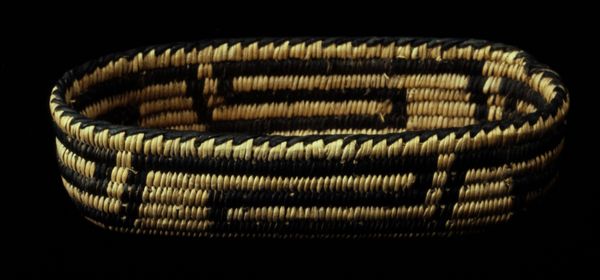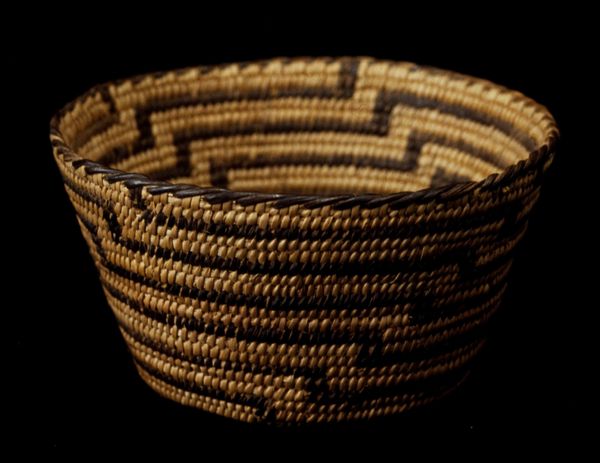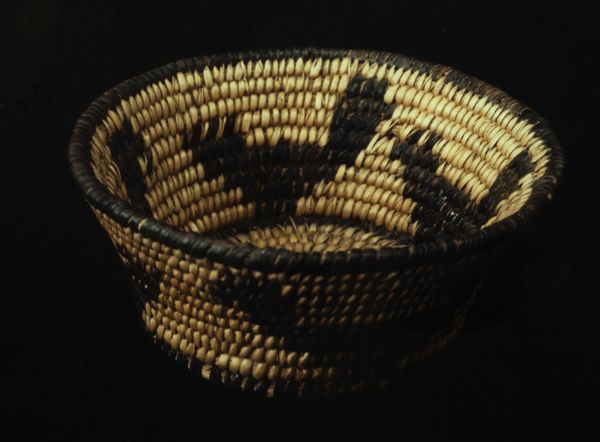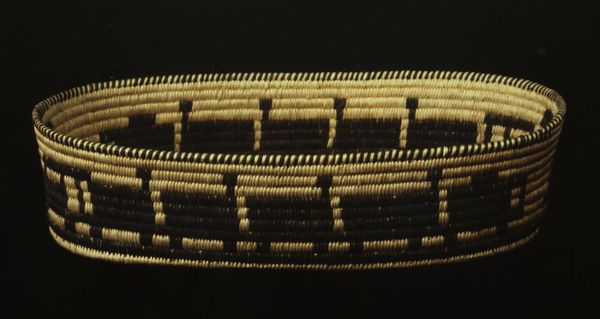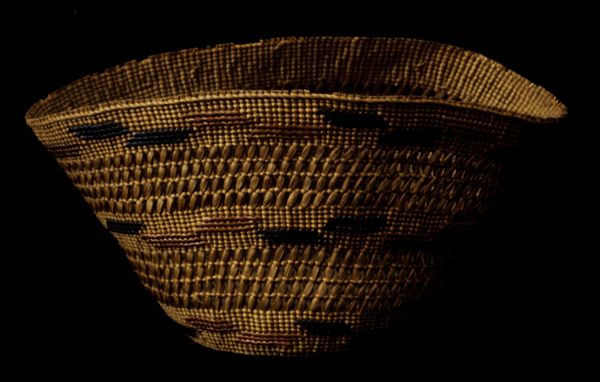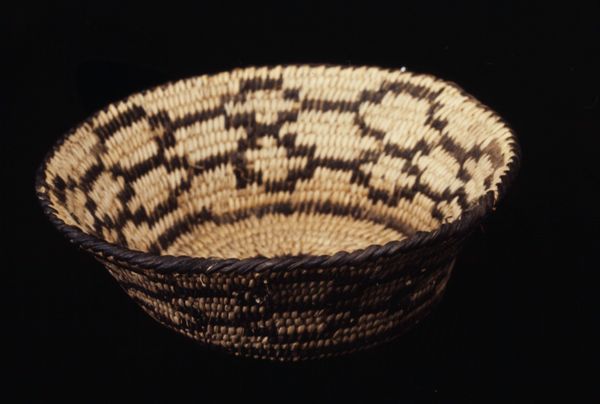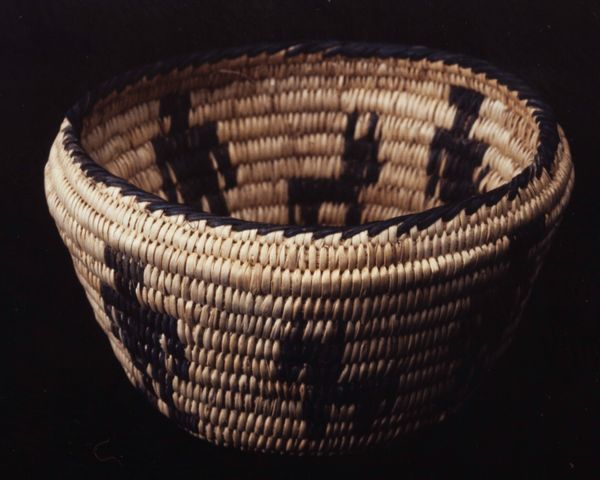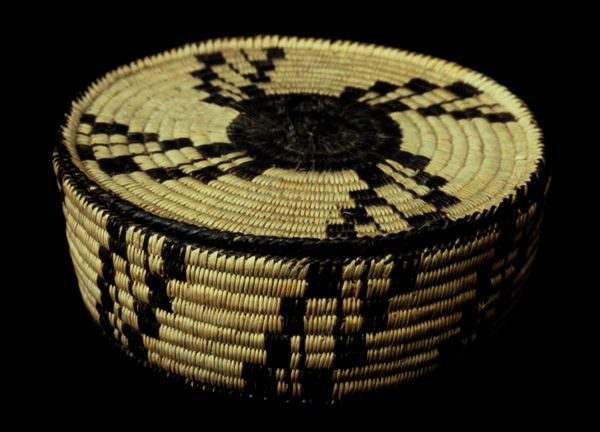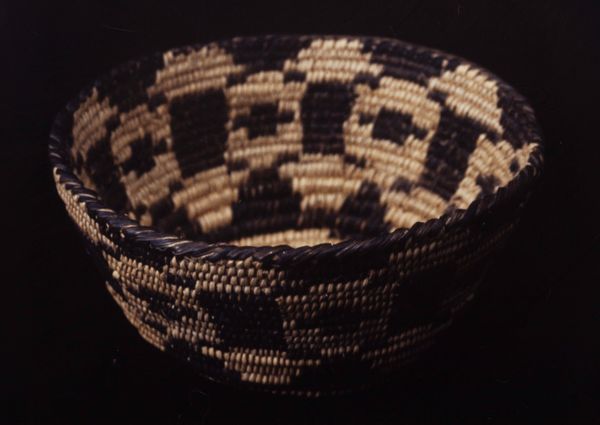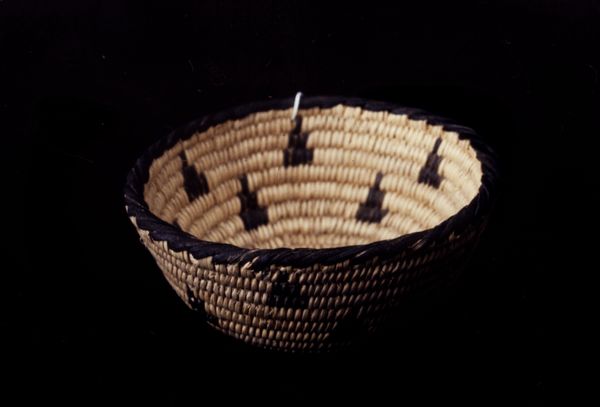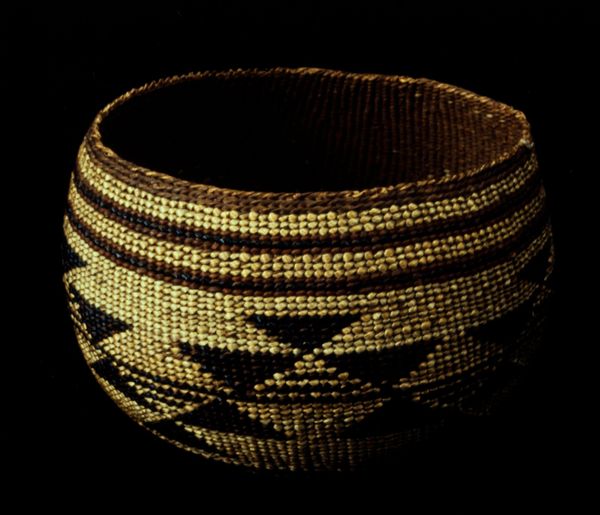
fibre-art, weaving
#
fibre-art
#
sculpture
#
weaving
#
geometric
#
decorative-art
#
indigenous-americas
Dimensions: 1 x 6 x 2 5/8 in. (2.5 x 15.2 x 6.7 cm)
Copyright: Public Domain
Curator: The object before us is identified simply as "Basket," attributed to the Tohono O'odham people, also known as the Papago, dating from around the 20th century. What strikes you first about it? Editor: It seems incredibly labor-intensive. All those tiny stitches! I wonder how long it took to make. There’s also a stark simplicity, just black and what looks like a natural fiber color. Curator: Yes, that intense labor is significant. We see the world rendered into geometric form, perhaps alluding to the built world, like dwellings, or natural formations in the landscape. Consider the Tohono O'odham relation to their desert environment, where resources are scarce and everything has a purpose. Editor: That context changes everything. When you frame it as a response to scarcity, the choice of material and the level of craft become almost devotional. Curator: Exactly. Basketry amongst the Tohono O'odham goes beyond mere utility. The patterns themselves can hold stories or spiritual significance handed down through generations, encoding cultural knowledge. The simple materials speak to the resourcefulness and artistry inherent in adapting to a challenging environment. Editor: So it's not just a basket to hold things, it’s a vessel carrying history and tradition. I keep coming back to the physical effort involved. You can imagine the weaver's hands, the process of gathering and preparing the fibers… that physicality is central to its meaning. Curator: That is a beautiful observation. Even its geometry evokes both pattern and the labor. Imagine the precision needed to achieve these even, repeated shapes. I’m drawn to consider how such practical objects act as symbolic containers. Editor: Seeing it as more than just utilitarian definitely reframes my perspective. It becomes less about the object itself, and more about the human relationship to the object and the landscape it comes from. Curator: Indeed, reflecting on its significance helps us better appreciate the depth of the O'odham relationship to materials, craft, and history embedded in their everyday lives. Editor: Precisely. It’s an incredible example of how "making" embodies cultural endurance.
Comments
No comments
Be the first to comment and join the conversation on the ultimate creative platform.
